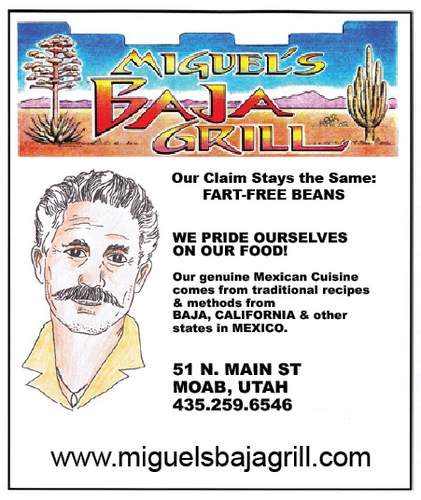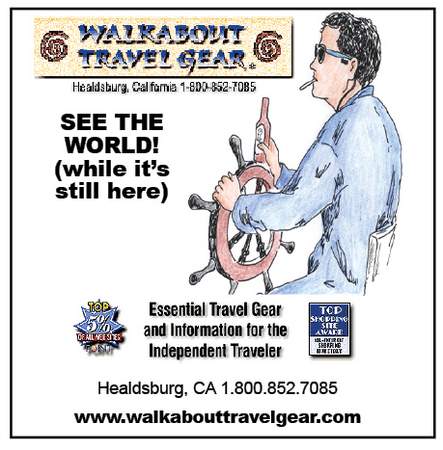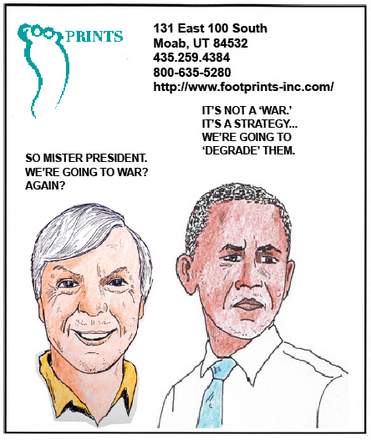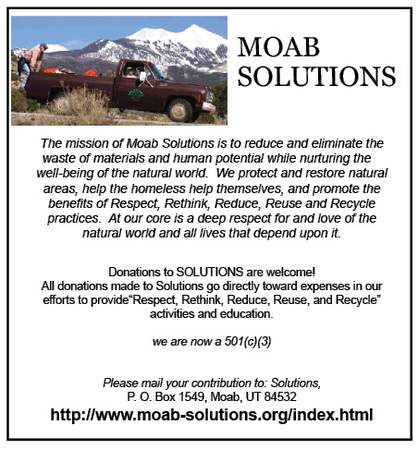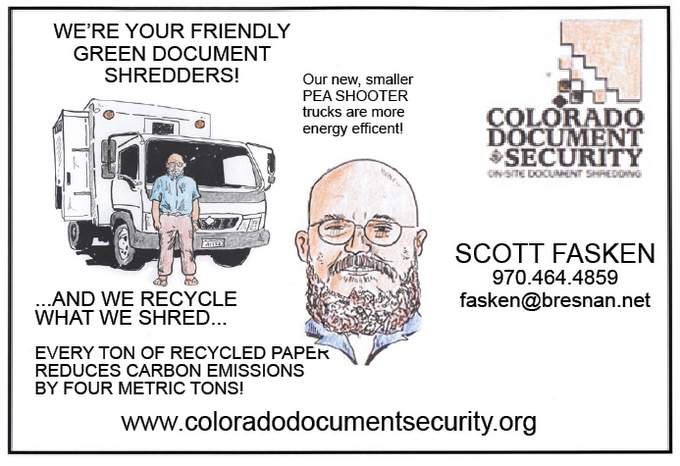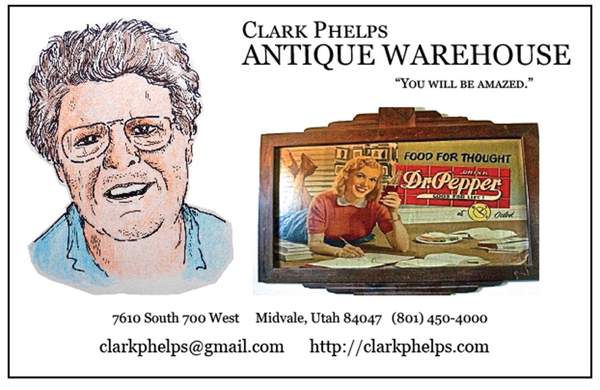Paul Vlachos is a New Yorker who understands The West. And he is a New Yorker who understands New York. Wherever Paul goes, he finds signs of life…
I could quote Robert Frost, which may be uncool in this day and age – “something there is that doesn’t love a wall.” I don’t see enough poetry quoted anywhere, except by poetry lovers, and even they share it with only with other poetry lovers, like some kind of secret thing. It’s a sad decline from what poetry once was less than a hundred years ago, and what it meant to people. I could quote Frost, but it’s a different kind of wall we’re talking about here. Frost was talking about a stone wall, the kind that you find all over New England. I’d like to talk about the walls of buildings, outer walls, to be precise, and those that are painted with some kind of sign or message. I could go into a diatribe on roadside advertising, but that would be ghastly, so I’m just going to comment on each wall here, which may not leave me with much to say. In those cases, I will let the walls speak for themselves. Yes, the subject of this edition is “Walls.”
1. Tucson, Arizona – 2014. Here’s the fantasy – I see this sign and think of a strip club, maybe a fashion show runway, neither one of which I’m familiar with. But it’s 2014 and I can search the internet for this place. Sure enough, I find it on Yelp, described by its denizens as a “dive bar” that has good kimchee. I never thought I would see the day where dive bars were fetishized and sought out, but such is the nature of this generation’s search for “authenticity.” I won’t go on about that here. This joint looks older than the hipster generation, though, and my next thought is “might there be an airport nearby?” I unfold my digital map and, sure enough, Davis-Monthan air force base sits right there and a runway terminates not far from this bar. My guess is that the current ownership bought it from the past owner, kept the name, and added kimchee to the menu. Had I been the original owner, I might have named it the “Sonic Boom Bar and Grill,” but that’s just me and there are more than a few good reasons why I should not own a bar. In this photo, I like the Christmas lights on the left, upper corner and the string of rope lights, artfully draped, across the top. I once was able to visit the “boneyard” – where they mothball old warplanes at Davis-Monthan. That was back in the mid ‘90s, when The Runway was probably a legitimate dive bar that had never heard of kimchee.
2. Tucumcari, New Mexico – 2012. This is a big arrow on a small outbuilding. The “drive thru” here – and I really like it when people use “thru” for “through” – is really just a looping turn and an open window. This arrow does not loop, though. It’s authoritative and I like the colors. I would have tried to squeeze my paintbrush inside those two conduits near the tip of the arrow, but I’m compulsive that way. That’s probably a good reason I did not end up as a sign painter, that damned perfectionism. This place was next to Rubee’s, a fantastic Mexican restaurant in Tucumcari that sold absolutely transcendent breakfast burritos. These burritos were exceptional. They would dissolve in my mouth and transport me to another place, and then I would transport myself back to the takeout window and buy another. Always buying another when I didn’t really need to. I would go miles out of my way to get those little suckers at Rubee’s. Then, just a few years ago, I was going through Tucumcari, having deluded myself that I was going there to shoot motel signs, but not-too-secretly planning to pig out on breakfast burritos, when I slowly drove over the curb at Rubee’s and discovered that they had closed down. In my sadness, I drove around the building twice, photographed this arrow once, told a sad story to my dog, and then quietly rolled out of town and back onto the heartless interstate, hungry and defeated.
3. Uvalde, Texas – 2013. I like Uvalde. I like southwest Texas. It’s still fairly unvarnished. I wanted to say “honest,” but I don’t know it well enough to call it honest, although I call it honest in a visual sense. It has not been modernized to the detriment of its history, nor has it been sold down the river of gentrification. I don’t think that would happen here even if they wanted that to happen, and I don’t really believe they would want that to happen. But I am just an itinerant Yankee who passes through these Texas towns, admires the view, and then moves on. This arrow is beautiful. The bricks, the colors, the ladder, the blue drainpipe. I loved discovering this one and then finding a way to shoot it. I suspect that it’s not as old as I would like it to be, but I could be wrong. Why do I say that? The accent on the “e,” for one thing. For another, the red is awfully bright, and red is the color most prone to fading and disappearing. Then again, this arrow is in a narrow alley, wide enough for only one vehicle to pass through, and this alley also runs on a north/south axis,so it might be spared from that southern Texas sun. And maybe it’s just an old arrow that’s been repainted and, the last time someone did it, they added an accent, not realizing that “Cafe” – with no accent – has a long, glorious history as a moniker in this country. And maybe it doesn’t matter. I like this wall a lot. It made me happy when I first found it. I may go visit it again the next time I pass through Uvalde.
4. Las Vegas, New Mexico – 2012. So much in Las Vegas seems to be falling apart, especially in the old section of town, near the train stop. I always try to stop at this town in northeast New Mexico, mainly for the fantastic hot springs nearby but, more and more, for the stuff that I like to photograph, the old stuff that’s falling apart, as well as the old stuff that persists, survives and still thrives. This establishment no longer thrives. Honestly, I don’t remember whether it was still in business or not when I took this photo, but I don’t think it was. I keep studying this photo and find it oddly compelling. I’d like to think it’s like Sophia Loren’s face, which they used to describe as having mismatched parts, but somehow coming together in beauty. I’d like to say that, but it would not be true. I would not immediately jump to the word “beautiful” here. The broken Coors sign with the remnants of adhesive next to it, the glass brick window with crap piled behind it. The graffiti, the weathered strip of plywood, the odd pastel colors of the cinderblock, the jailhouse-door quality about the drive-up window. It’s just another arrow, a more minimalist arrow, for sure, but just another arrow in just another small town. It feels more desperate, this arrow, as though the owner wants to shout out “This is it! This is the window!” Honestly, this photograph brings me down a bit, in a visceral way. At the same time, it fills me with a presence of the recent past, the 70’s and 80’s, maybe, when there was action around this window, in this parking lot, and people gathered and laughed and cried and fought. This wall is a mute witness to that time.
5. Del Rio, Texas – 2013 “Hot Pit Bar B Que” I am a sucker for a good steel building or a corrugated wall of some kind. Put some hand-painted words on it and I practically genuflect. Too bad the sun wasn’t directly on it the day I shot this photo, but that happens sometimes when you’re on the road – the sun is in the wrong place. You take the shot, anyway, but you vow to come back. It’s always a good excuse. “The light will be better next time.” But you always see new things every time you come back, so it’s a good idea. A little bit like Heraclitus, who said “you can’t put your foot in the same river twice.” So it is with the Hot Pit. Here is what the local reviews have to say about it, and I’ll just quote the headlines: “Let Down” (Apparently, the BBQ sauce had a strong vinegar taste.) “Possibly the best BBQ in Del Rio” or “Traditional Del Rio BBQ.” This last review said it was a quiet place where people “mind their manners.” This person also called the cole slaw “grassy.” All interesting stuff. All indicators that the Internet is either the mankind’s greatest single invention or the biggest flytrap of them all. Or both. Either way, this wall is in Del Rio, which always feels like a place just off the edge of the known universe to me. It’s on U.S. 90, which has become one of my more beloved Federal highways. I like I-90, as well, but that’s way, way up north and it’s an interstate. This route is slower and more interesting. When it drops you in Del Rio, you are on the border with Mexico and it has that border town edge to it. It feels like there is dark stuff going on in the background. Maybe I just watched “Touch of Evil” too many times as a kid. Either way, when I’m in Del Rio, I feel like I’m far from home. Maybe the next time I go through, I should try staying a while.
6. Vaughn, New Mexico – 2012 I have gone at some length in the Zephyr about Vaughn, New Mexico, and how it is one of those crossroads towns that I pass through again and again. This photo is a detail from an old building in Vaughn. I know this much: it said “Dining Room” and it said “Dance Hall.” Half of this wall was once cut out to make a crude door. That’s what you see on the left side, with the mismatched planks. I’ll give you some other details, as I saw the whole building in Vaughn and remember it. The place was called the “Silver Spurs,” and it consisted of a cinderblock building connected to a larger, older wooden structure. My guess is that the dancing happened in the wooden structure, where this photo came from. The cinderblock place on the left was probably the dining room, but it said “Live Music” on the facade and there were some crude musical notes drawn above one of the barred windows. There was a crooked, rising sign post out front that had a Schlitz Beer sign next to a Coors sign. The cinderblock building also had an old chimney made out of local stones. The wooden building – the dance hall – looks like it was a stable during the frontier days. On the front of it now is a political sign placed by a recent candidate for Probate Judge. The piece of wall that we are looking at here is just a little remnant, a fragment from another time and place, somebody’s dream a long time ago. Notice on the letter “i,” originally from the word “Dining,” how the painter dotted it with a starred, embellished dot. You will see this a lot on wall signs out here. It’s what people often do when they detail cars, putting in pin striping, I’d bet there’s a term for that kind of dot, but I don’t know it. Maybe I should ask a tattoo artist. Maybe there is no term for it. Either way, you see it a lot. If you look at walls, that is.
7. Santa Rosa, New Mexico – 2012. I really love this photo. I love them all – but some are prettier than others. I love the colors of this wall, the multiple shades of green, the cinderblock pattern, and the golden grass along the bottom. I love the faded lettering in the old-fashioned typeface. I love the term “Coin Laundry.” It’s an old term. It’s an honest term. It’s a tall building and they put the sign way at the top, probably so that people would see it from far away. I always enjoy visiting laundromats when I’m on the road. It’s a welcome break, a place to meet people, usually a clean bathroom. And, of course, I walk out with clean clothes, which is worth as much as any book of inspirational sayings.
8. Alamogordo, New Mexico – 2012. I once posted a photo somewhere, probably on that social media site that I often vow to quit, of a detail from this wall. It was more dramatic, as I just framed the words “Food” and “Now.” I liked that shot, but I also like the whole wall. Here it is in all of its glory. Instead of the dramatic “Food Now,” you get the actual “Food – Now Open,” which is much more prosaic. Visually, it’s still great, but it lacks the emotional “oomph” of the first shot, and it demonstrates how powerful photography can be if you selectively frame things. As with any art, you can choose to emphasize, highlight, ignore or minimize anything in the service of your message or vision. What was my message or vision here? Not much. I just liked the sign. I was happy to show the wall at a moment when the sun was at a perfect angle in the sky. I took about three shots and then rolled down the road, in the direction of the “World’s Largest Pistachio” statue, a mile south. I love the barn-red paint in this photo and the “Food” sign in the upper right. That is something primal and direct that you don’t see as much on the road anymore: signs that say “Food” or just the simple command to “EAT.” A couple of extra points for the wide corrugated metal of the building. I need to get back to Alamogordo. I could tell you a chilling tale about ristras, from a time when I passed through Alamogordo in 1995, but I’ll save that for some future date. Maybe.
9. Mojave, California – 2013. The town of Mojave is still kicking, but there are a few stores and strips that have faded. Esther’s is one of them. This is not the prettiest storefront you’ll come across. It’s not really a wall, I suppose, but I have included it here. It’s a facade. It may have looked better before the plywood went up, before the mark of failure was nailed to the doors and windows. It’s not easy to run any small business, especially a flower shop the desert. I would like to have met Esther. I do not know what happened to her. If we go to Yelp, though, which is fast becoming a repository – however fleeting – of our business and cultural history – we find one glowing review, posted in 2009, so we know it was open until then. The reviewer states that she never would have expected such a store in that location and that it was in “one of my favorite old rock buildings in Mojave.” That’s about all I can find online, so we would have to go back to the wall for a clue, but I am not in the mood to create vast suppositions. I’m more inclined to be sad over the death of Esther’s dream, perhaps the death of Esther, herself. It’s easy to drive through a town, get gas, and then move on in whatever direction we are going, on whatever important business we think we are doing. This goes for any town or large city. We pass through and we are gone. We often don’t think of the people who live there. They are always “the other.” They do not come from where we come from. We leave them behind and we roll on while they eat their lunch, live their dreams, and forget about us as quickly as we forget about them.
10. Barstow, California – 2012. I always come back to Barstow. It’s usually baking in the sun, the way it was when I last left it. The same signs appear, but they often look a little different. Or maybe I just happen to look a little more closely. The previous time through Barstow, I had noticed how strange the lettering was on this sign, but I just moved on. This time, I took the photo and, when I looked at it a few months later, I saw the little stars in the corners, just like the dot on the “i” from the Vaughn, New Mexico photo above. I always like the personal touch. I still wonder how the owner of this establishment felt when he saw the words “Deli” or “Check Cashing” after the sign painter was finished. I wonder if the painter got paid in advance. Those words are clearly added to the original sign, which is pretty battered to begin with. Perhaps it was the owner who added those words, though, and perhaps he or she was perfectly satisfied with the results. If it had been my sign, though, I would have told the sign painter he was not going to get paid until he re-did it. Just me, just my opinion. Then again, Barstow always throws me a curveball of some kind.
11. Limon, Colorad – 2012. This corrugated wall sits near the signage of an old Phillips 66 station, which was strewn on the ground nearby. There was also a small gasoline tanker truck parked under a tree, so I can only conclude that gasoline is stored somewhere in this metal building. I cannot surpass the poetry of corrugated, rusty metal, but I always appreciate it and often photograph it. The enamel sign, affixed with six screws, is old and chipped and rusty. It’s the only clue we have as to how old this wall is. It’s still hard to tell, but that sign most likely dates it to no later than 1960. Yes, many enamel signs were put up after the middle of the 20th Century, but they were much more common in the first half. This was most likely a ready-made sign that the owner bought and put up. I drove a bit around Limon and then got back on the road. It was the start of a long haul home and I did not want to linger much. Only later, when I looked up Limon, casually noted the historic high and low temperatures, along with the monthly averages, read about the racial makeup of the town and other bits of data, did I learn of one defining fact. In 1990, an F3 tornado touched down nearby, then sped towards Limon and destroyed most of the town’s business district “in moments,” according to some anonymous Wikipedia editor. I wonder now if the gas station signage I saw laid out on the ground resulted from that tornado, 23 years earlier. It seems like the most likely explanation. One small fact changes everything, especially my mental construct. Now, that signage seems almost like a memorial, a solemn display of salvaged items. This wall stands next door to it.
12. Hilo, Hawaii – 2013. Hawaii is part of America, even if many people forget it at the subconscious level. My friend, Peggy, who grew up on the mainland, but has lived in Hawaii for many years, always tells me that people there often say “I’m going back to the U.S.” It’s only natural. It’s far away and it feels different. It is America, though, and it contains gas stations and laundromats, fast food places, U.S. mailboxes and diners, all those ephemeral things that define us. It’s also Hawaii, an exotic entity that stands on its own, which harbors a strong secessionist movement, and which has never fully integrated its traditions with the mainland. Hilo is an old Hawaiian port town. It is prone to tsunamis and is home to more native Hawaiians than most other large towns in the islands. It’s also the rainiest city in America. Hilo gets a lot of rain, although it was sunny when I was there and, I suspect, it doesn’t feel as rainy as Portland, Oregon, which always seems gray. Hilo gets intense rain often, but the sun also shines. The rain leaves a patina of decay and rust on susceptible surfaces. it does beautiful things to the paint, as you can see in this photo, the rear wall of a laundromat. Why is it that rear of laundromats often feels like the front? I suppose it’s because that’s where the parking is and, in most cases, you are there with a heavy load, so the parking side of the establishment is the business side. No time for frivolities or fancy facades here, just make sure that I have the least distance to travel with my heavy bags of clothes. When there is parking in the front of a laundromat, you often see big plate glass windows, to let in the light and to advertise the machines. Such was not the case here, though. And parking is at such a premium here, as in most of Hawaii, that it’s for the “Laundromat Only,” as the sign says.
13. Mojave, California – 2014. A faded mural from a long-closed western wear store not far, in fact, from Esther’s Flowers, described above. I find most western wear stores irresistible, especially when I am out west, in a small town that might harbor actual farmers or cowboys. The same goes for hardware stores. If I have time to stop, I will. When I see a store that didn’t make it, that shuttered its doors, for whatever reason, I get a bit blue and think about what once was and what might have been. I am too much the sentimentalist, the romantic. I like to think that I have gotten harder with age, that I care less. It could be that I show it less outwardly, but that’s just because I’ve gotten better at not showing my feelings. It still makes me sad to see these closed-up places. I still travel back in my mind and imagine what they were like then business was good. I think about what people were wearing when they drove up and parked, what kind of cars they were driving and what they were talking about. Nostalgia may truly be the death of the moment, but it’s important to remember the past, as well. Otherwise, what’s the point? Yes, the present is where we are and, yes, my daily struggle is to stay in the moment, but we need to know where we came from just as much as we need to have a dream about where we might be going. They are both fuel, emotional and creative, for life. This place sold jeans, so they painted a couple of cowboys roping a steer on the wall. The Mojave winds have done their work and torn away the particles of paint, bit by bit, leaving what looks like mural from ancient Greece on this desert wall. Someone may or may not come along one day, buy the building, and paint over it. We don’t know that but, in the meantime, it is important to meditate for a moment on that wall as we pass it by, rushing from one important moment to the next.















